KJ Callihan
What’s a “Coregasm” and How Can I Have One?

What’s a “Coregasm” and How Can I Have One?
While mostly a female phenomenon (although some say men can have them too) the concept of the coregasm (or EIO, Exercise-Induced Orgasm), or essentially bursting into orgasm during an exercise workout, has people both mystified and intrigued. How do they happen and why – and how embarrassing is it? We examined a study and a survey on the issue to find out the juicy details!
The Abs Have It, Hands Down
In a recent Kinsey Institute study, around 45 percent of female respondents stated that their first coregasms (also known as exercise-induced sexual pleasure, EISP, where there isn’t an orgasm or EIO but pleasure still existed) were experienced during abdominal exercises, while 26.5 percent were felt while lifting weights, 20 percent during yoga, 15.8 percent while bicycling, 13.2 percent during a run, and around 10 percent while walking or hiking.
Sexologist Alfred Kinsey’s work should continue, as well as exploration of the “core’s” link to orgasm
In reflection of these percentages, Debby Herbenick, the Center for Sexual Health Promotion Co-Director at Indiana University’s Kinsey Institute, observed that any exercise involving the “‘core” muscles seems to trigger the EISPs. Having included some of the experiences studied in her book, Sex Made Easy, Herbenick remains curious about the whole area, stating, “Exercise-induced orgasm is something we really know nothing about — not scientifically,” she said. “[Sexologist Alfred] Kinsey mentioned it in his [‘Sexual Behavior in the Human Female’] book in 1953, and it sort of got left there.”
Varied Responses Were Received
From the 100 respondents found over five weeks of searching for study participants, a range of stories and experiences unfolded. Many women had experiences once and could not replicate them again, while others had them consistently or sporadically with different types of exercises. 69 percent were heterosexual and most were either married or in relationships. Most stated they were not fantasizing about sex when the coregasms occurred, and some stated they could not control their experiences and were self-conscious about them in public. And interestingly, over half had an EIO or EISP experience during abdominal exercises within the past ninety days of being surveyed.
It isn’t one-size-fits-all EIO-ing
Dean Somerset, an exercise physiologist in Edmonton, Canada, explained to SELF magazine that, “It’s similar to any other type of orgasm in that it’s more a matter of what works for one person instead of one specific thing that works for everyone.”
So anyway. How can I have one?
For those who haven’t yet had the pleasure of a coregasm, there are ways to increase your chances. According to Herbenick’s book, The Coregasm Workout, following these steps can do just that:
Challenge Yourself
1. Give yourself a challenge: Do the extra exertion exercises, not a leisurely stroll around the block. Herbenick explains that, “They tend to happen from intense or demanding exercise. For example, for women who experience them while doing crunches, they pretty much never happen on the fifth crunch and are more likely to occur after 50 or 100 crunches.”
Check your order
2. Do your workout in the proper order: Starting with a warm up of about 20 minutes, get into the abdominal part of your workout second instead of strength training, then cardio.
Let the day’s worries go while you work out
3. Free your mind and the rest will follow: Focus on the workout, your body, and being mindful of the here-and-now experience occurring. Some like to fantasize during their workouts to try for a coregasm, but Herbenick says that isn’t necessary – although it is, of course, allowed.
Get those lower abs into every move you can!
4. You can do it, Get your lower abs into it: Exercises demanding of the core, or abdominal muscles, are most popular for coregasmers. According to the Somerset survey, hanging leg raises were five times more likely to result in EIO than any other exercises. Says Somerset, “With these kinds of exercises, you have to contract your pelvic floor in order to bring your legs up,” he says. Try performing different moves that loop in your ab muscles and see where that gets you.”
While Herbenick agrees these strategies won’t necessarily help everyone, it’s still worth a shot. But don’t get too down if you can’t make it happen. She states that, “It’s not the most common thing in the world. Just like not everyone orgasms from fantasy or from direct clitoral stimulation or from vaginal intercourse, not everyone will orgasm from exercise. We’re all a little different, and that’s OK. What’s important is that women feel that they can explore their bodies and their sexuality in ways that feel good to them.”
*As with all my articles, please consult your physician before attempting this or any other activity or diet strategy discussed here.
Do you have parasites in your stool? How to find out and what to do about it
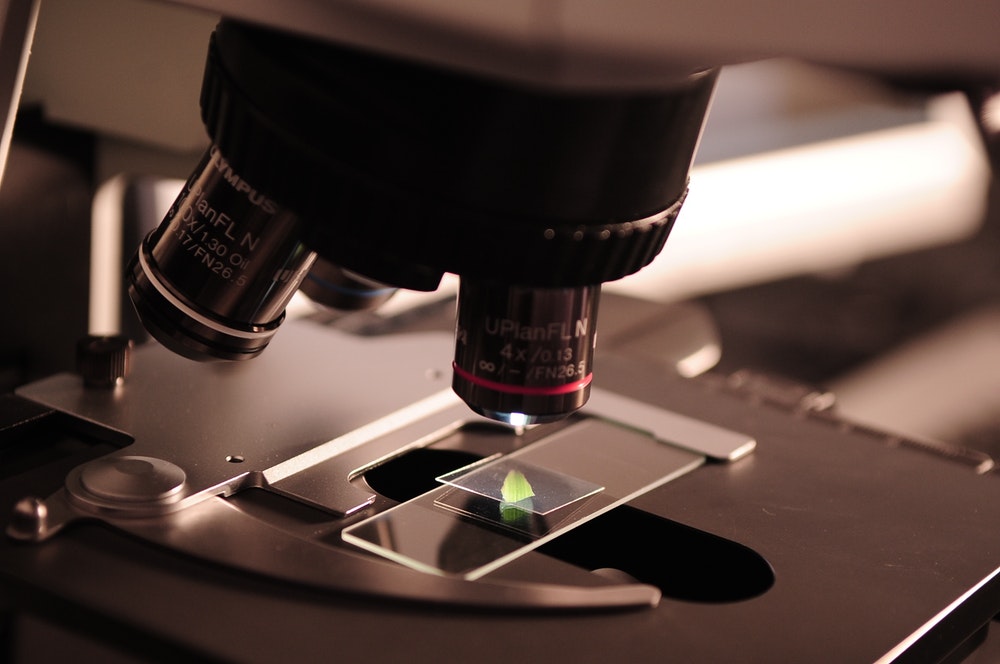
What does it mean if I have parasites – in my stool? How did I get these?
University of Maryland Medical Center explains that there are two basic forms of intestinal parasites, which are helminths and protozoa. While helminths cannot multiply once they reach full adulthood, protozoa can multiply once inside the body, potentially causing serious infections. Most often transmitted during contact with fecal matter in the water, food, or soil systems, a person’s risk of exposure increases by visiting regions where such infected areas are likely to exist, or by utilizing poor sanitation systems or practicing poor hygiene. Always wash your hands frequently with soap and water when you suspect parasites are possible, and be sure to ask about drinking water and food safety before ingesting anything through the mouth. Those with weaker immune systems, like young children, those with HIV or AIDS, and the elderly, should avoid these areas whenever possible, and are particularly at risk if living in institutional care centers or enrolled in child care centers.
What are the symptoms of intestinal parasites?
Staying aware of the symptoms and treatment of parasitic invasions helps us become better able at managing what they bring with them and taking our health back. (The symptoms range considerably depending on the type of parasite and severity of the infection. Symptoms can include: diarrhea and vomiting, nausea, abdominal pain or soreness, dysentery, a rash or itching/irritation around the vulva or rectum, bloating or gassiness, fatigue, unexplained weight loss, a worm visibly passing your stool, repeated illness, repeated yeast infections, recurrent bladder infections, sores on the lips/mouth, white spots inside the mouth, rashes or itching/irritation around the genitals of either gender, intestinal cramps, endometriosis, eczema or psoriasis, toe fungus, athlete’s foot, sensitivity to food, smells or chemicals, allergies, strange cravings for sweet or starchy foods, brain fog, menstrual irregularities, anxiety or depression, spots or “floaters” over the eyes, a history of antibiotic, steroid or contraceptive use, muscle or joint aches, or constipation)
Testing for parasites (and their resulting damage) can be done in several different ways
In order to determine with certainty if you have parasites, stool samples, the Scotch tape test (touching tape to the anus several times and then checking the tape for parasitic eggs under a microscope), or blood tests may be necessary. Xrays may also be used with barium to help understand more serious problems caused by the parasites, if any.
In the case of finding visible parasites in your stool, there are four top common types of culprits which may be at fault. They are:
pinworms: These are small worms that wiggle, and according to Web MD, “can infect the intestines and cause intense itching around the anus.”
ascaris worms: These are roundworms which can be seen in the stool visibly and also cause respiratory problems.
lice: These are tiny, visible insects which infest the scalp and hair resulting in itching and skin bumps. They can be very difficult to eliminate due to widespread resistance to common treatment chemicals.
and crabs: These six-legged menaces are limited to the pubic skin area and pubic hair, causing intense itching until effectively treated.
Interestingly, around 30 percent of all parasites are visible to the naked eye, while the remaining 70 percent are only detected under a microscope – and the smaller ones are much more dangerous. Therefore, ridding yourself of parasites may not always be reflected visibly in the stool, especially considering the 3000 potential typesof parasites that may infect the human body at any given time.
Other, lesser known worms which can be found in the stool include:
tapeworms: These can be obtained from eating raw or undercooked infected fish, pork or beef. Although rumored to be able to grow quite large, the normally expected size is around 1/2 to one inch long.
white worms: These resemble angel hair pasta and come in all sizes.
red worms: These resemble the average earthworm and come out of the colon wrapped in balls.
inch worms: These are about the width of a pencil, bumpy, black and usually around two inches long.
black worms: These are anywhere between one to twelve inches in length and can nest deeply in the colon walls.
hook worms: Around six inches long and curved, these are grayish-colored worms which grip the inside of the intestinal wall and suck blood. These are common worldwide.
threadworms: These are small, cream-colored worms thin like sewing thread. They can exit the colon by the hundreds.
Little Fish: These are around a half inch long with fish-like heads and tails. They may “swim” out of the colon in “schools.”
Fuzzballs: These are round and yellow with furry exteriors, which grow to between 1/4 and 3/4 inch in diameter.
Spiders: These are usually an inch long, resemble spiders and are brown.
Stickpin worms: With heads like peas, these are about an inch long. Adults are black and smaller, younger ones are white.
What are the best forms of treatment for parasite elimination?
Treatment usually involves a process that first tests to see if someone has parasites, then kills the worms (through prescribed medications or alternative remedies/herbs, Epsom baths, etc.), and simultaneously limiting or avoiding certain foods to prevent any left alive from feeding or growing. While undergoing treatment for parasites, people should keep healthy sleep patterns, eat a balanced diet of recommended foods, drink plenty of water and exercise daily.
*As with all my articles, please consult your physician before trying any activity or diet strategy discussed here.
An Introduction to Tantric Sex and Why You Need to Try It

What is Tantric Sex?
According to sex therapist, tantra teacher, and relationship coach Jacqueline Hellyer, Tantra focuses on the sexual practices and philosophies of certain ancient societies including the Indian Tantrics and the Taoists of ancient China, who viewed and studied sex as “both an art and a science.” Hellyer explains that as our limited western views and experiences on sex have started to grow and expand, we’ve realized we’ve been lacking and started seeking out something new and different for ourselves.Tantra fulfills this seeking.
Tantric sex relies upon our being present, in this moment, in the here and now
Says Hellyer, the most essential element of Tantric sex is the concept of “presence” and being in the present moment. Similar to the concept of mindfulness, we must shut our minds and thoughts down from worrying about the future or reflecting on the past in order to be fully present. The present moment, the here and now, is not usually a worry at all, and can be quite lovely if allowed to be truly experienced as it simply is – especially during an act of warm, sensual, and connected love-making.
Sex can be deeply spiritual and sacred
Additionally, Hellyer shares that “western perspectives moving away from a limited view of sex where sex was shameful or smutty to something more holistic allows sex to become uplifting and life-enhancing…There’s the spiritual side. Spirituality will lead to transcendent experiences. It’s also great for everyday sex too, so that sex becomes a wonderfully energizing experience that makes you more vital. And yes – Tantra does lead to unbelievable sex! And when it comes to what turns women on and what turns him on too there is just nothing quite like Tantric sex.”
Through intimate, mindful connection, our health can improve, too
Through being present, sex partners can begin to enjoy the entire process of sex more mindfully, not focusing on the orgasm as the grand finale and most important part. Instead, you’ll focus on a broader range of feelings and sensations throughout the entirety of the experience. Since the focus is more on prolonging the act than finishing it, you can begin to recognize aspects you’d missed previously. Christiane Northrup, M.D. states, “Sexual energy is one of our most powerful energies for creating health.”Author of the book Women’s Bodies, Women’s Wisdom, Northrup further explains that,“Through the intimate connection with another, our stress hormones lower and our serotonin shoots through the roof.” With this in mind, it’s truly a fact that tantric sex is good for your health!
Beginners’ Steps for Tantric Sex
A few basic beginner’s tools are needed to get you started. First, you’ll need to create a space specifically sought out and designed for optimal intimacy. It should be clean, comfortable, and relaxing. If you like lots of pillows, throw them around the space, but don’t allow too much clutter. Flowers and a light, fresh fragrance are often helpful in creating a deeply sensual space. Music, essential oils, soft sheets (or smooth, whichever you prefer), or a light white noise filter or gently trickling decorative water fountain can add to the essence.
Sync up your breathing
Next, try syncing up your breathing with your partner’s. Sit on their lap and breathe in when they breathe out and out when they breathe in. According to Wendy Strgar, CEO of Good, Clean Love,“Becoming conscious about your breath is central to all yogic practices and is foundational in Tantra.” Focus on trying to consciously energize your breath and harmonize breathing together.
Try keeping your eyes open for the fullest experience together
Keep your eyes open – the whole time. This builds a deeper connection with greater intimacy. Although this may be a challenge for us in the west, it’s essential to the Tantra. Says Strgar, “Truly witnessing the act of love is profoundly transformative.”
Enjoy slow and relaxing foreplay with no hurry to the next step
Take it nice and slow. Foreplay is extremely important in Tantra, ensuring that both partners are connected and aroused. Linger and focus on one another fully, experiencing each moment mindfully and thoroughly.
Transcendance and Heightened Levels of Ecstasy, Anyone?
Hellyer insists that once fleeting moments of bliss can be held for a long time during authentic tantric sex. In addition, it can teach us how to be lovers in ways that are far more satisfying than ever before. With a focus on energizing ourselves through the experience, tantra is about generating, channeling and using our sexual energy across all of life – not just one aspect of life. Hellyer concludes, “Our whole life becomes a sexual expression and we are constantly using our sexual energy.” Be sure to visit Hellyer’s youtube channel for a series of instructional videos on tantric sex.
*As in all my articles, please be sure to contact your physician before attempting this activity or any other activities or diet strategies discussed here.
What Occurs During a Woman’s Monthly Follicular Phase?

What is the “follicular phase” of a woman’s cycle, and why should she care about it?
Out of the four phases of the overall menstrual cycle, the follicular phase comes second, after the menstrual phase, and leads directly into ovulation. It normally comprises days 1-14 of an average28-day cycle. Three primary areas comprise the focus of the activity during this phase, which include 1. ovogenesis (translation: generating of the ovum, or producing the egg), 2. production of estrogen, and 3. determination of the length of the rest of the cycle.
A follicle-stimulating hormone, or FSH, increases in the woman’s blood early in the days of menses, which selects about 6 – 12 follicles to begin growing inside the ovaries. Not all primordial follicles grow at once, but rather only the number selected. If they were to mature all at once, premature menopause would ensue.
Follicular formation and maturation
The follicles themselves are already created and total up to 400,000 while a woman is still in utero in her own mother. Amazingly, these follicles are all she will need (most likely) from the start of her periods (menarche) to her days of menopause. They sit in her ovaries until a certain stage in maturity during which they are termed “primordial follicles.” Once the woman hits puberty, their development continues until they are fully mature and form the Graafian follicle, which then prepares to release the egg.
Prepping for the egg
Preparation of the egg includes a building up of fluid in the follicle, and enlargement of the follicular wall. As the ovum “ripens,” it also enlarges, and the follicle in turn secretes the hormon estradiol, which prepares the endometrial lining for receiving an egg. Further maturity ensues with the egg moving to the surface of the ovary and developing a projection.
An egg is born
Later the Graafian follicle ruptures and releases the egg, passing it into the Fallopian tubes. From there, ovulation takes place, around 14 days into an average 28-day cycle, 2 weeks (or 14 days) after menstruation. Ovulation allows the egg to travel through the Fallopian tubes into the uterus, taking up to 3 days, and the empty ovarian Graafian follicle fills with corpus luteum, which secretes progesterone, to further prepare the endometrial lining for the egg to implant.
The importance of the follicular phase to all women
The follicular phase of a woman’s menstrual cycle is particularly important if she is trying to conceive, as it is the time to set the scene for producing a healthy egg. However, some also believe this phase is important whether you plan to conceive or not, as it is essential for maintaining well-balanced hormones. The regulating of hormones and “living in sync” with an ever-changing body can help women achieve optimal health.
Eating according to the follicular, new moon, or “springtime” phase and the spiritual component involved
Eating according to the current menstrual phase is suggested by some alternative practitioners with the aim of greater energy and nutrition for the woman and her potentially developing egg/fetus. From a spiritual and seasonal perspective, the follicular phase is “springtime,” as it follows the “winter” of our periods, and now our estrogen and progesterone levels have returned back down to their lowest once again. We begin to experience the dawn of a new rise in estrogen here as well. New energy and new, creative ideas are symbolized and likely experienced during this phase, where the woman may want to try new things or go new places. This makes sense as the follicular phase is basically the time when women of our ancient ancestry might have tried to seek out a mate in hopes of becoming pregnant with a new baby during the next phase.
Fresh, energizing, light foods are ideal for the follicular phase
Foods recommended to aid hormone levels during the follicular phase include lighter, energy-building foods like greens, light smoothies and juices, salads and sprouts, cashews, oats, beans, and peas. Vitamins A and B, which are crucial for healthy eggs, are abundant within these foods. For those who consume meat, chicken or freshwater clams are recommended. A perfect fresh smoothie for the follicular phase is created in this video. Women with PCOS should try to eat sprouted foods, avocado, and foods that are fermented are advised for this phase, such as sauerkraut.
* As with all my articles, please consult a physician before attempting the activities or diet strategy discussed here
The Whats and Whys of the C-Diff Diet
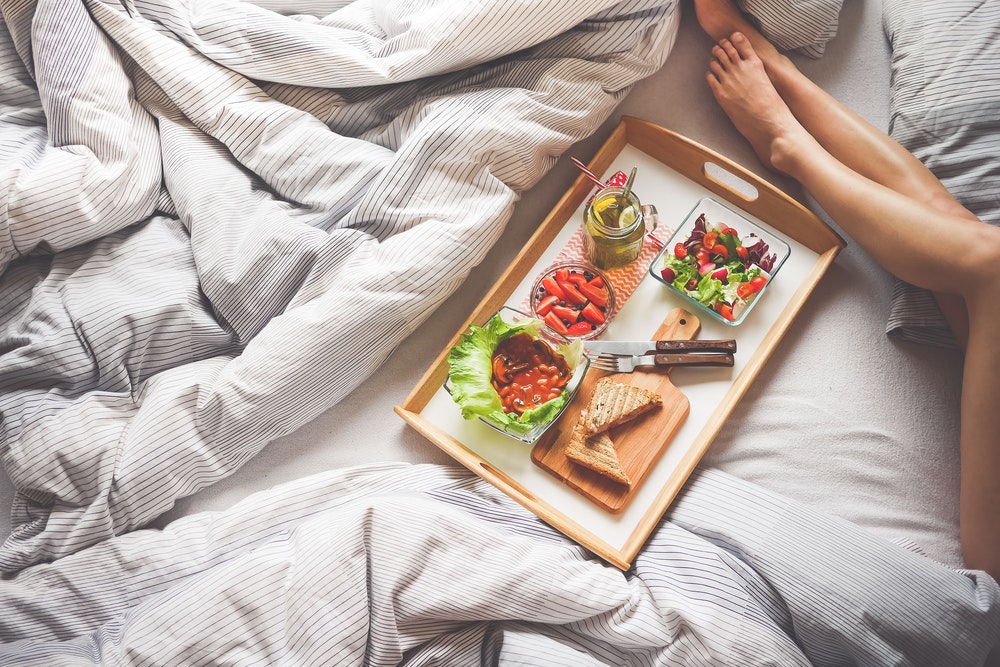
What’s C-Diff and Why Should I Need a Certain Diet to Treat It?
Also referred to as C. difficile, C-diff is considered a ‘superbug’ by many, and is officially termed Clostridium difficile. It is a bacteria which causes the irritation and swelling of the large intestine or colon. Known as colitis, this type of inflammation can result in loss of appetite, dehydration, fever, weight loss, diarrhea, nausea and cramps. It can be transferred between people on door knobs, telephones, or bed rails when the ill individuals do not wash their hands thoroughly after using the bathroom. Diagnosed mostly in those being treated for cancer with chemotherapy or older people in staying in nursing homes or hospital settings, health care workers must use and encourage caution and exemplary hygiene to avoid transmission among patients. It should be noted that C. difficile is best prevented by thorough and frequent hand washing with soap and water. It is most commonly caused by the current or previous ingestion of antibiotics. It has also been noted in those who take medications such as Prilosec, Nexium, or Prevacid for stomach acid reduction. Although usually mild to moderate in severity, colitis can occasionaly become serious enough to be fatal.
Why not just more antibiotics?
Interestingly, C-diff is usually treated with antibiotics (although a common source of the problem is reportedly antibiotics, since they kill healthy gut bacteria as well as the problematic). In addition, eating a healthy and balanced diet should be and is often encouraged. Since bouts of diarrhea from C-diff can mean 10-15 trips to the bathroom per day, the Mayo Clinic recommends a diet rich in starchy foods like pasta, crackers, potatoes, rice and wheat, and avoidance of dairy, and greasy or sugary foods and caffeinated drinks.
Diarrhea and nausea can lead to dehydration as well, so care should be taken to alleviate this. Increased water intake, as well as specific replenishment of necessary electrolytes (like magnesium, potassium, and sodium) are recommended. Sports drinks, fruit juice, soups, and broths are often suggested for C-diff sufferers to up their electrolytes.
Since antibiotics often cause the problem, probiotics can frequently be used to treat it. Yogurt, tempeh, miso, soy milk and juices are usually suggested to re-introduce healthy bacteria to the C-diff sufferer’s belly, with Saccharomyces boulardi being specifically beneficial (as well as Lactobacillus GG, Lactobacillus Reuteriis, and Lactobacillus acidophilus) according to the Mayo Clinic. Dietary supplements can also be consumed to provide probiotics.
Nutrient-dense foods are most highly recommended for C-diff patients because of the possibility for them to become malnourished. (If all you can keep down is two bites, better make it two of the most nutritionally dense bites you can!) Whole grains, veggies, fruits, and lean proteins are suggested to build up proper immunity and fight the infection. Supplements of vitamins and minerals may be necessary if food cannot be kept down or is otherwise insufficient.
What are some other alternatives for C-Diff sufferers?
Addition natural remedies recommended include such alternatives as bentonite clay. This powdery substance is also called Montmorillonite, is formed from aged volcanic ash, and acts an excellent detoxifier. The clay is named after the site of the largest known deposit of bentonite clay found in Fort Benton, Wyoming. Often recommended for those exposed to toxins or poisons, bentonite clay is said to draw toxins from the body and re-establish a healthy balance of gut flora.
Activated charcoal is another such alternative remedy for C-diff which is said to behave in the body in a very similar way to bentonite clay. Pulling out the toxins while restoring the necessary balance to the gut is its priority. Some recommend alternating or cycling natural remedies with foods for optimal results in restoring this balance.
What about a natural alternative to the antibiotics themselves?
In addition to the aforementioned remedies, some alternative practitioners recommend that C-diff sufferers take oil of oregano instead of antibiotics as well. With excellent anti-bacterial and anti-fungal properties present in the compound forms of carvacrol and thymol, oil of oregano is also without any of the harmful side effects caused by prescription antibiotics, making it frequently a superior treatment (a well-known chicken producer recently advertised replacing their antibiotics with oil of oregano as well). This impressive lack of harmful side effects from the oil of oregano treatment also leads to less problems with vitamin absorption, damage to the lining of the digestive tract, leaky gut symptoms, and overall antibiotic resistance than their prescribed antibiotic nemesis.
* As with all my articles, please consult your physician before trying this or any other activity or diet strategy recommended here.
What is Histamine and How Can I Treat Its Effects?
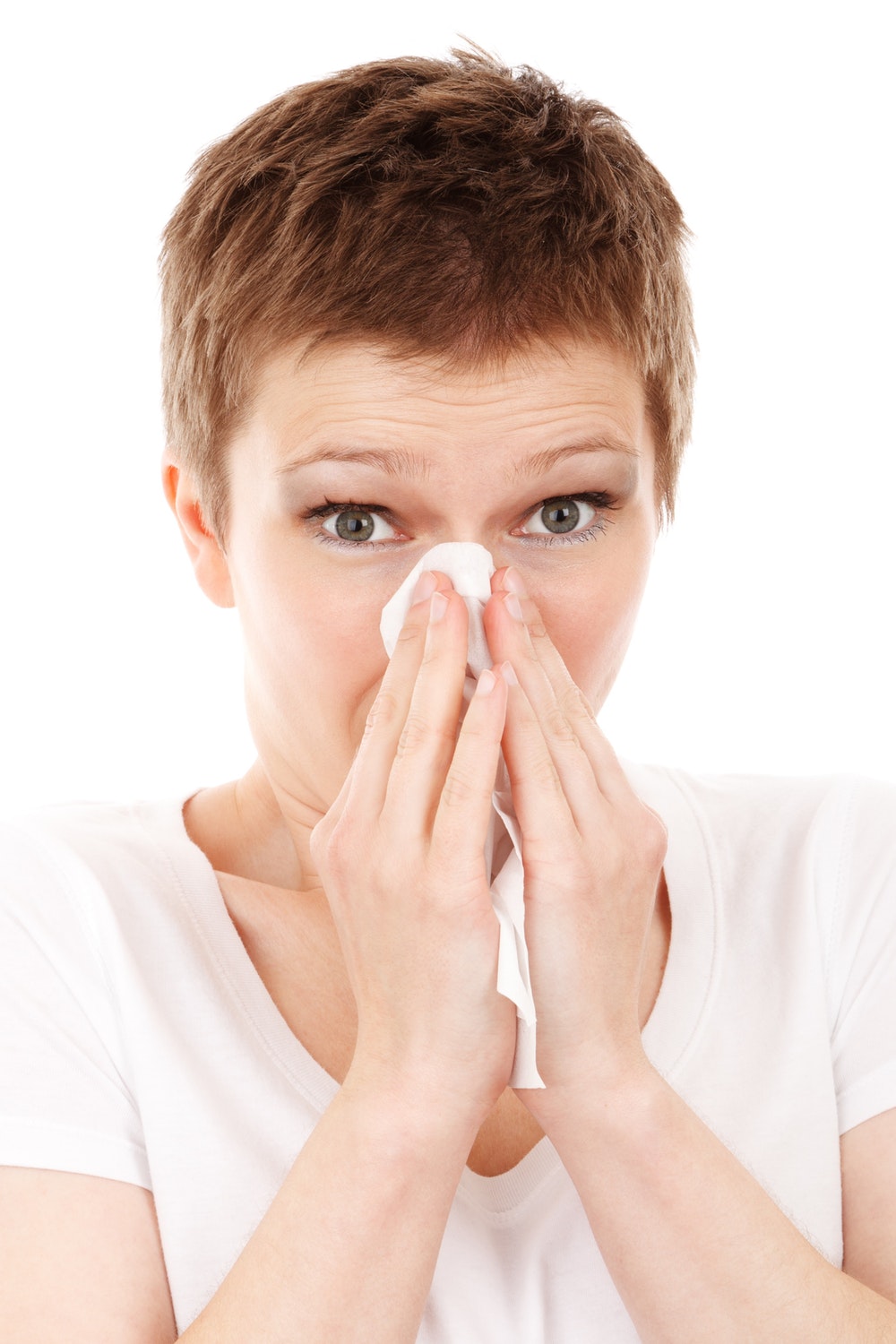
A body chemical found in and released by certain cells, histamine has a role in the immune system protecting against foreign bodies and germs. It also results in various symptoms depending upon where the release occurs (and in these situations, it is usually considered an excessive release in response to dust mites, insect bites, pollen, foods, or medications), including itchy and watery eyes, sore and scratchy throats, a runny nose, and/or a tightness of the chest, shortness of breath, wheezing, or coughing.
Increased histamine levels are a sign the body is using its natural defense systems, producing issues within minutes ranging from mild discomfort to actual shock. In instances of asthma and allergies, it’s seen as over-reacting to perceived invaders of the immune system. In these events, more serious responses can result in symptoms such as a heightened production of mucus and bronchoconstriction.
Let’s break down the symptoms and look at each one individually:
Itching: Raised histamine levels cause itching which may appear all over the body, only on certain parts, or only on one side of the body. Itching occurs due to heightened amounts of histamine triggering additional inflammatory reactions in the upper skin layers.
Hives: Also known as urticaria, hives are an inflamed skin condition resulting in red, raised, swollen areas of the skin which appear abruptly and can last up to several hours. They most often appear on the back, arms, chest, hands, neck, or face, causing itching and burning ranging from mild to severe.
Red Eyes: Another allergic symptom experienced due to raised histamine levels is red eyes, which are caused by watery secretions on the eyeballs and eyelid surfaces. These secretions cause itching, watering, redness, and swelling.
Nasal Congestion: Certain allergens and airborne particles cause a different reaction in those with allergies, resulting in symptoms of the aforementioned runny nose, nasal itching, itchy eyes and ears, postnasal drip and sneezing. This may also be referred to as hay fever. It is primarily due to inflamed cells releasing extra histamine which increases mucus via dilated blood vessels in the nose, eye, and throat linings.
Asthma: Excessive histamine strikes again, this time in the form of swollen mucosa lining the lungs and increased mucus blocking the airway creating breathing difficulty and tightening of the chest.
Anaphylaxis: This is shock, developed from an allergy due to the extreme, sudden reaction of raised histamine levels. It is usually formed in response to a food, insect, medicinal allergy and can be potentially life-threatening. Symptoms range from swollen and reddish skin and abdominal pain with nausea and/or vomiting to coughing and wheezing, difficulty breathing, dizziness, fainting, low blood pressure, and nasal congestion.
Angiodema: This symptom is experienced as a swelling in the deeper skin layers and linings, like the lungs, digestive tract, or throat. Resulting from raised histamine levels as well, it can affect the eyes and lip areas, hands and feet, or cause swelling in the throat, airways, or mouth that block breathing and cause death.
When excessive histamine release is noted, then, antihistamines have been created and prescribed in response. Some of the most popular brand names of common antihistamine medications are Benadryl, Claritin, Allegra, and Zyrtec. Other medicines include leukotriene modifiers, which decrease the swelling and mucus production present in some cases.
Although many prefer the traditional western medical protocol and meds, others like to look into the natural versions instead. The same thing occurs with antihistamines, since several natural alternatives exist in the form of plants and foods.
These include:
Stinging Nettle: This is a commonly found herb, available in most health food stores, which is believed to be a natural antihistamine. Studies have shown over half of participants given 300 mg daily stinging nettle for their heightened histamine levels experienced relief, and nearly 70 percent surveyed rated it above the placebo in efficacy.
Vitamin C: Another easily obtained naturally-occurring antihistamine, Vitamin C is found in numerous types of fresh produce and in supplements. With no side effects, this remedy is suggested in quantities of at least 2 grams daily in treating seasonal allergies.
Quercetin: Naturally present in apples, grapefruit, okra, red wine, and onions, quercetin is another study-proven antihistamine also found in foods and supplements.
Bromelain: This is found in supplements or fresh pineapples, and is believed to be helpful in alleviating respiratory distress and allergic inflammation when taken in 400-500 mg doses thrice daily.
* As with all my articles, please consult your physician before attempting any remedy or activity suggested here.
The Top Health Benefits of the Life-Changing Coffee Enema
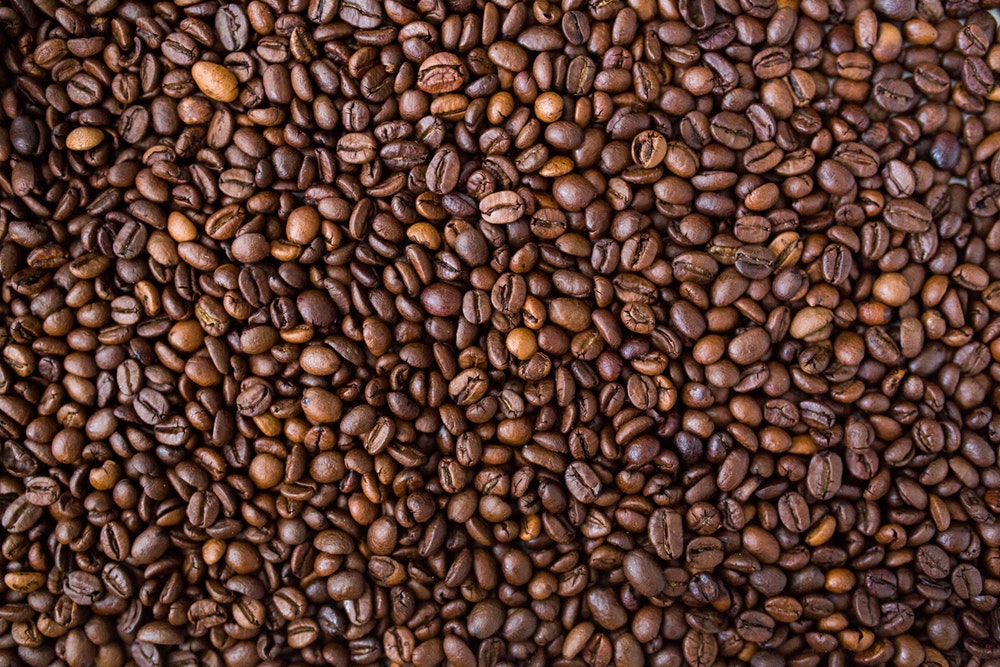
The odd-sounding but health-promoting coffee enema, while new to most of us, is not a new concept at all
We’ve previously discussed coffee enemas, which were popularized by Dr. Max Gerson’s cancer-fighting diet regimen of the 1920’s. A method through which toxic bile is eliminated via the liver, coffee enemas have been tested endoscopically and found to produce near immediate results. Simply explained, coffee enemas disrupt the colon walls’ collecting of toxins, which in turn prevents the liver from absorbing the toxins. By activating a sluggish liver this way, the small intestine is alkalinized and digestion is enhanced, while the astringency of the large intestine is increased which helps to scour the colon. While there is some benefit to the colon in this way, the focus of the coffee enema is primarily on its detoxification of the liver (thereby supporting the body’s own built-in detoxifier – the liver). Modern medical literature describes this modality as appropriate and safe for use up to several times per day since no negative side effects have been reported.
Where did this type of treatment originate?
Enemas are an ancient form of hydrotherapy, utilized for colon detoxification for thousands of years. The adding of coffee is attributed to Gerson’s cancer-fighting protocol after the doctor found these types of enemas also stimulated increased enzymes (via the glutathione-S-transferase enzyme system) which fight free radicals, which minimize their effects and diminish the likelihood of the development of cancer, heart disease, and the aging process in general. Amazingly, this enzyme system has been measured at 600 percent higher activity rates than normal after a coffee enema has been implemented.
Although the main purpose of the coffee enema has been in treating and preventing various illnesses, it also provides a bevy of other benefits. Turns out this strange but remarkably helpful procedure also results in:
*increased cell energy production
*blood circulation improvement
*tissue health enhancement
*blood purification
*cellular regeneration
*heightened immunity
*faster repair of tissue damage
Experts insist that the flushing out of toxic bile can additionally help to:
*relieve nausea
*alleviate general nervous tension and
*diminish depression
But that’s not all!
Believe it or not, there are even more benefits to the coffee enema! Let’s check further:
* Pain relief
During the first World War, nurses began using water enemas to relieve soldiers’ pain when morphine wasn’t available. Later, German researchers discovered that coffee was more effective than water at providing the analgesic benefits, which can be greatly helpful at alleviating the die-off and other pain symptoms caused by detoxes and cleanses.
* Improved mental clarity, energy levels and mood
In ridding the body of the toxins and waste that clog vital systems, coffee enemas in turn boost energy and relieve resulting fatigue and illness. Many of those who have tried the treatment report a noteworthy “high” in mood, followed by increased mental clarity and improved moods.
* Elimination of parasites and candida
Since average lifestyles and diets expose us to massive levels of toxins and food chemicals, as well as other environmental poisons in the air, soil, and water, coffee enemas can counteract these effects by irrigating and flushing the resulting residues of parasites, candida, impacted fecal matter in the colon, and other such toxins.
* Decrease in stomach problems, bloating, poor digestion, and flatulence
When our livers are overburdened and functioning poorly, inadequate digestive abilities may result. Coffee enemas can help with this by forcing toxins out.
* Treat and prevent chronic illness
Maintaining a clean body is one key to longevity free of cancer and other chronic diseases. Dr. Gerson included and emphasized coffee enemas as an essential component of his cancer-curing regimen for that reason.
I know you’re probably thinking what I was thinking: Why haven’t I heard of this sooner?
Well, there’s a reason for that, according to some proponents. The historically popular practice of detoxifying and purifying the body including the key aspect of colon cleansing for thousands of years. Since the turn of the 20th century, however, the colonic machine took preference to these regimens, and were used in many doctors’ offices and hospitals for treatment of the ill. Later, a preference for drugs and surgery took over most such preventative measures once treasured, resulting in the enema-lacking directives given by most modern physicians today. Although current methods appear to provide instant relief from symptoms, they are being considered by some to be extreme and unnecessary by some, even causing elements of further harm in certain cases. Hence, a return to the old ways has begun, with treatments like coffee enemas at the front of the line!
*As with all my articles, please consult your physician before attempting this or any of the other activities or diets discussed at home.
The Core-Strengthening Bridges Workout
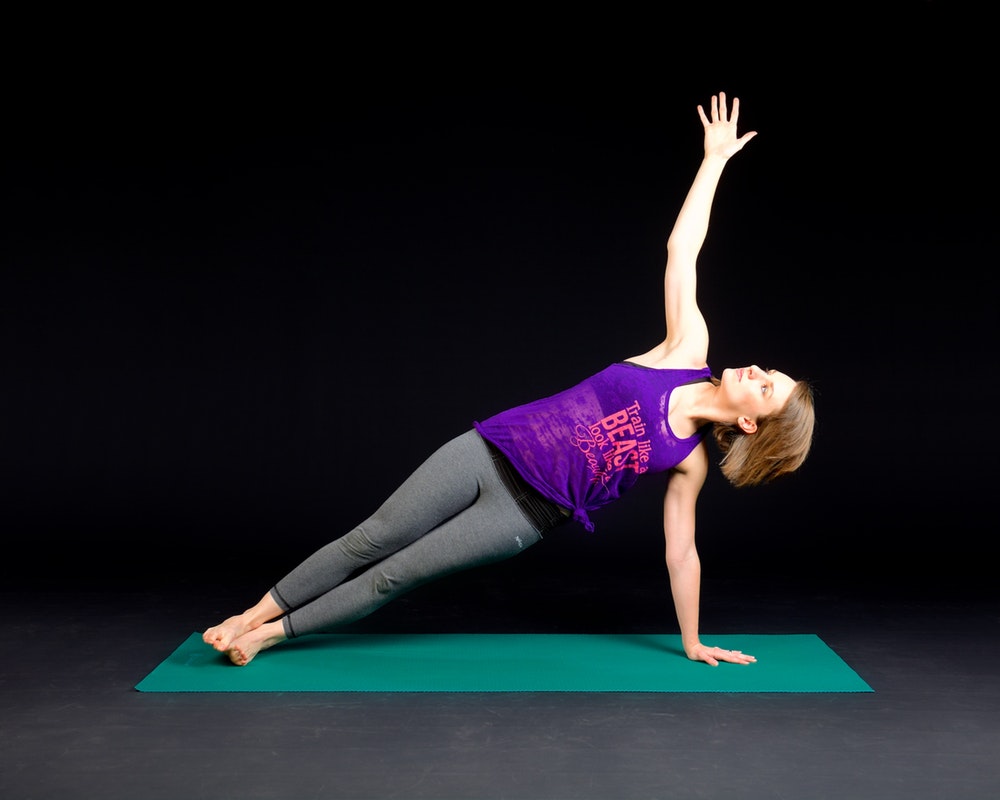
Bridge exercises build a strong core – and that’s great news for everyone, especially those with back problems!
If you’re ready for a workout that targets and builds your core strength and stability, then say no more. We’ve got you – and the Bridge exercises we’ve gathered will have you strong and centered in no time!
According to the Consumer Health Digest, your whole core benefits from the standard Bridge exercise, including your back and hips, not just the glutes and hamstrings you’d expect. And since the core is vital for holding your organs in place and controlling the limbs, it’s a great place to build strength! Additionally, for those who’ve ever endured a back injury, this could be excellent news.
What are the benefits of a Bridges workout?
Core strengthening of the type targeted by Bridge exercises can be beneficial in several ways. First, it reduces back pain. Weak core muscles are to blame for swayback postures and the loss of adequate lumbar curve in the spine, where stronger, balanced cores assist with maintaining proper posture while reducing strain. Secondly, core strengthening improves athletic performance and third, it improves postural imbalances that can lead to injuries. According to one expert, “The biggest benefit of core training is to develop functional fitness—the type of fitness that is essential to daily living and regular activities.”
How can I get started?
Also known as the “Hip Raise,” the Standard Bridge exercise is done by lying on the back with hands at your sides with knees bent and feet flat on the floor underneath your knees. Then you tighten your abs and buttocks while raising your hips to create a straight line from your shoulders to your knees. While you hold the pose for 20 to 30 seconds, squeeze the core muscles and imagine you’re pulling your belly button inside toward your spine. Then lower yourself back to the floor. (If you’re unable to hold the pose for 20 seconds, just hold it as long as you can and then gently lower yourself back to the floor. Repeat this exercise ten times. Add a little time, or a few seconds, each day to build up your strength) Don’t forget to breathe while you hold the poses, as well. This exercise is considered basic rehabilitation for core and spinal stabilization.
Try adding a little challenge to your routine
Once you’ve gained some strength, try the same pose with a padded weight spread across your hips, or try a single leg lift Bridge pose. This exercise is the same, but extends one leg at a time after pulling the knee in toward the chest first, and then back down.
Following this, you can try the Glute Bridge March, which requires you to do the same thing only lift one leg at a time and bend it as if you are marching. Repeat this ten times, holding each pose for a few seconds, before you change to the other leg.
The Triceps Bridge exercise asks you to lift up off the floor on bent arms and bent legs with your backside facing the floor and front facing the ceiling. This works the triceps as you stretch each leg out straight and hold for 20 – 30 seconds, then switch. Do ten of each leg.
Then you can do the Single Sky Bridge exercise, which works the hamstrings, lower back, and glutes specifically. You’ll need a chair for this. This is done the same as the first standard Bridge exercise, but one foot goes on the chair (make sure it’s steady for your weight) and the other raises to point your toes to the ceiling. Hold each pose in place for a few seconds, then lower yourself back to the floor.
If you have an exercise ball, you can try the Exercise Ball Bridge exercise, which requires you to place both feet balanced on the exercise ball, hands by your side, holding for 20 – 30 seconds. Repeat this ten times.
Next, try the Dumbbell Bridge Exercise. This one, as you may have guessed, requires dumbbells (keep them light for starters) in each hand with hands up above your head on the floor. Starting off, your pelvis, shoulders, and feet are all on the floor as well, but with each exercise, lift the buttocks and straighten arms to lift the weights toward the ceiling. Come back to the floor and do this ten times.
If you’d like to try more, youtube has numerous examples to show you how to do each Bridge exercise. Start easy and work your way up – your core, and all the muscles and organs depending upon it, will thank you!
*As with all my articles, please consult a physician before trying this at home
How to treat hypothyroidism naturally
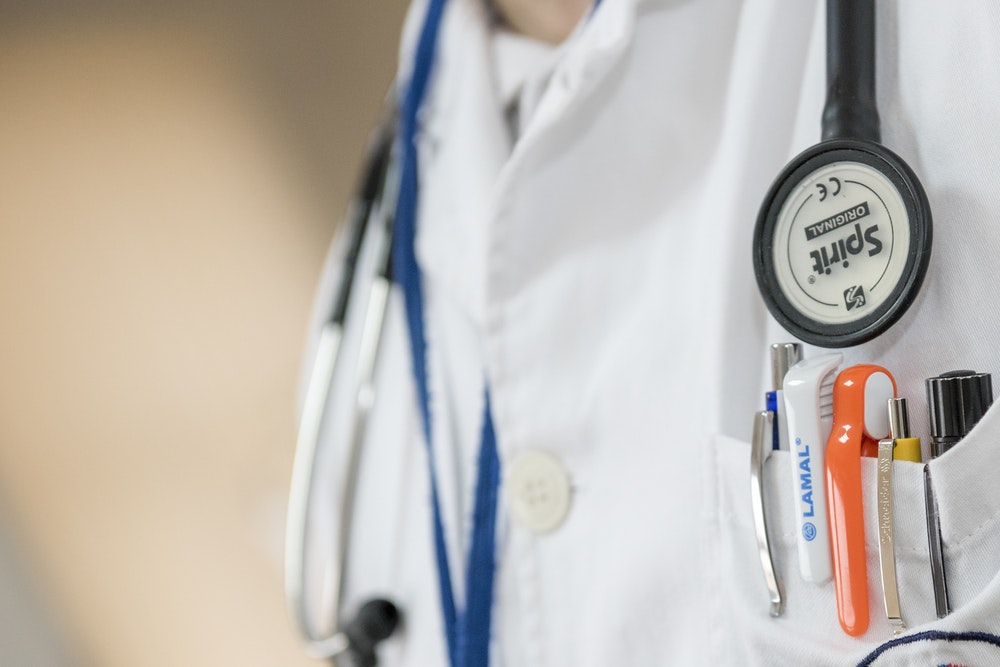
Have you ever wondered if maybe you have a slow metabolism, or perhaps hypothyroidism? Well according to Dr. Axe, these types of questions are not rare at all. And if estimates are correct on his website, 13 million sufferers of hypothyroidism are undiagnosed right now. So what can be done?
The thyroid gland is located in the center of your lower neck and has a huge list of responsibilities. Not only does it regulate body temperature and control your metabolic rate, but Dr. Axe states that it also “produces a hormone which impacts every cell, tissue and organ in the body.”
Problems with the thyroid can be caused by various issues, but the most common reasons are:
1. toxicity (radiation and heavy metal exposure), 2. deficiency (in selenium and iodine), 3. food intolerance (to gluten and casein), and 4. hormone imbalance (cortisol levels too high from stress, too little fat in diet, diet too high in carbs)
While some people struggle with hypothyroidism (an underactive thyroid, which doesn’t produce enough thyroid hormone), others are afflicted with hyperthyroidism (when the gland produces too much of the hormone than is needed), and they are essentially opposites. The symptoms of each are as follows:
Hypothyroidism suffers from symptoms of: forgetfulness, weight gain, fatigue (of the extreme kind), depression, while
Hyperthyroidism suffers from symptoms of : nervousness, irritability, vision and eye problems, unexplained weight loss, sleep disturbances, and muscle weakness
In order to get properly tested to make sure you have hypothyroidism, consult a qualified physician and/or holistic practitioner as soon as possible. Once diagnosed, you can follow through with the traditionally prescribed treatment, which is usually some type of pharmaceutical which has likely numerous side effects – or you can go the natural route which follows:
*Cut out or greatly reduce caffeine and sugar
This includes refined carbs like flour. Instead, eat non-starchy veggies as much as you can.
*Increase protein
This can be in the form of legumes, quinoa, nuts and nut butters, hormone and antibiotic-free animal products.
* Eat enough fat
This can be olive oil, ghee, flax seed, fish, nuts and nut butters, full fat cheese, yogurt, cottage cheese, coconut milk products, and avocados.
*Do a heavy metal detox
Dr. Axe recommends using a blend of chlorella, milk thistle, cilantro and turmeric
*Go gluten and A1 casein-free
Go grain-free or at least gluten-free and only use dairy from A2 cows, sheep or goat milk
*Get proper nutrients
Make sure your diet contains enough omega-3 fatty acids (from walnuts, flax seed, fish, grassfed animal products), selenium, zinc, iron, vitamin D (50-80 ng/mL), vitamin A, the B vitamins, and iodine. Keep in mind primary iodine sources are sea vegetables and seafood while secondary are asparagus, lima beans, spinach, mushrooms, eggs, summer squash, Swiss chard, garlic and sesame seeds.
*Minimize your goitrogens
These foods interfere with your thyroid’s proper function and consist of Brussels sprouts, cauliflower, cabbage, kohlrabi, rutabaga, broccoli, turnips, watercress, peaches, radishes, soybeans, and kale. Cooking makes goitrogens inactive, so warm them up and indulge occasionally otherwise.
*Cut out the BPA (Bisphenol A)
This is found in plastic bottles. Use glass, stainless steel or BPA free plastic containers only.
*Include glutathione
This boosts your body’s immune system and while not found in many foods, there are some which can help your body produce it: grapefruit, squash, raw eggs, avocado, asparagus, broccoli, and peaches.
*Check for allergies or food sensitivities
This can result in an autoimmune response seeing the offending foods as invaders.
*Get your gut flora checked
Healthy gut bacteria is needed for 20 percent of thyroid function, so supplement with probiotics if you’re deficient.
*Check your adrenals
Adrenal fatigue is linked to hypothyroidism as it’s rare to have one second without some level of the first.
*Pay attention to your stressors and learn relaxation techniques
Chronic stress can influence hormones and the thyroid is very sensitive to such things.
*Request a thyroid collar
If you must get x-ray, ask for the thyroid collar to protect your vulnerable thyroid from radiation
*Increase your selenium
Ensure your diet gets enough selenium – but not too much! Go for brazil nuts, sunflower seeds, mushroom, beef, onions, and salmon.
*Get your silver fillings removed
If your mouth contains amalgam fillings, ask a DAMS mercury safe dentist about having them removed
*Grab some adaptogen supplements
Lowering cortisol levels and enhancing thyroid production is the name of the game with Tulsi and Ashwaganda.
*As with all my articles, please consult your physician before trying this at home.
Should I Get a Yoni Massage?

Could you benefit from a yoni massage?
As discussed previously, yoni is a Sanskrit word meaning “womb”, “uterus”, “vagina”, “sacred space,” “sacred temple,” etc, and is associated with the Hindu Goddess Shakti and the Divine Feminine. A yoni massage, as recognized in the tantra, regards the female genitalia as a sacred temple. Yoni massage can be conducted for several reasons, including healing and releasing tension and stress held in the yoni, cervix and uterus from either trauma or suppressed sexuality or sexual energy, or for learning about owning one’s sexuality Other reasons can include creating pleasure, learning how to orgasm, healing pain or numbness, removing blocks that limit sexual pleasure and orgasms, develop a deeper awareness of yoni, as well as learning how to ejaculate. It should be noted that although a yoni massage can often result in an orgasm (and some women report intense, full body orgasms to boot), it does not always happen nor should one necessarily enter with that as the total expectation. However, when an orgasm does occur during yoni massage, it can often be more encompassing, thorough, and satisfying than any others. Essentially, it is done to connect a woman to her inner core or goddess essence overall.
What occurs during a yoni massage?
During a yoni massage, emotions (both positive and negative) can be released due to the stored up tension being released, as often the emotion connected with traumatic or other such events remains in the body until released. Also during the massage, receivers and givers must build trust and the giver must not expect anything in return for the treatment other than allowing and helping the receiver to fully enjoy, release and relax. As the session goes on, both individuals will find they connect to a higher energy and women may gain a greater understanding of and connection to their bodies. Men, when present or giving the massages, can increase their reverence for the female body as well.
Who should do a yoni massage?
Practitioners should be fully trained in Yoni Healing and Tantric rituals, and must maintain a space of sacredness and respect for themselves and the receiver at all times. A yoni massage session can be viewed as a healing method, but some say that women with serious unresolved issues related to sexual trauma may not want to start with this as a treatment. It is also not a medical treatment, and should only be conducted on healthy individuals.
A whole body experience that touches on emotions and the spirit as well
According to Eyal Matsliah, “Yoni massage is a whole body experience that includes touching, arousing and massaging the whole body, focusing on the neck and shoulders, buttocks, breasts, hip-joint, and finally the outside and then inside of the yoni, while occasionally massaging the rest of the body…(it) is meant to work on and involve all the chakras (energy centers), elements (air, water, etc.), and on the physical, energetic, emotional, mental and spiritual levels/aspects. Yoni massage is recommended and beneficial for nearly all women (and it) can be done by itself and for itself, or as part of tantric love-making, either before during or after the sexual act; it can be done between same-sex or opposite-sex friends, between lovers or with a therapist.”
Three Main Aspects of the Yoni Massage
Matsliah elaborates, explaining that there are “three main aspects of yoni massage, (in his professional experience, which are) pleasure, therapy, and spirituality.” By these, he means that, “You can not expect to learn how to give a yoni massage just for pleasure and orgasms, as some men do, and some resources focus on. When a woman experiences deep arousal, there will be pleasure and then sometimes physical or emotional pain will arise; A man needs to support the woman and facilitate her process of accepting and releasing the pain and emotions. Therapy involves facilitating pleasure to dissolve the pain. Pleasure is therapeutic. Deep orgasmic states are a spiritual experience, and both you and your partner need to learn how to let go of the pleasure or the physical body in order to facilitate and support the woman in opening to these elevated realms of consciousness and existence.”
While a woman should not necessarily expect orgasms from the experience, Matsliah reports that most women can (eventually) begin to learn how to experience not only orgasms, but multiple orgasms, different types of orgasms, and even an “orgasmic state.”
It sounds worth a try, if you’ve got a trained practitioner available. But as always, with all my articles, please consult your physician to be sure you’re healthy enough and ready for this type of treatment before doing it yourself.
The What, Why, and How of Yoni Steaming
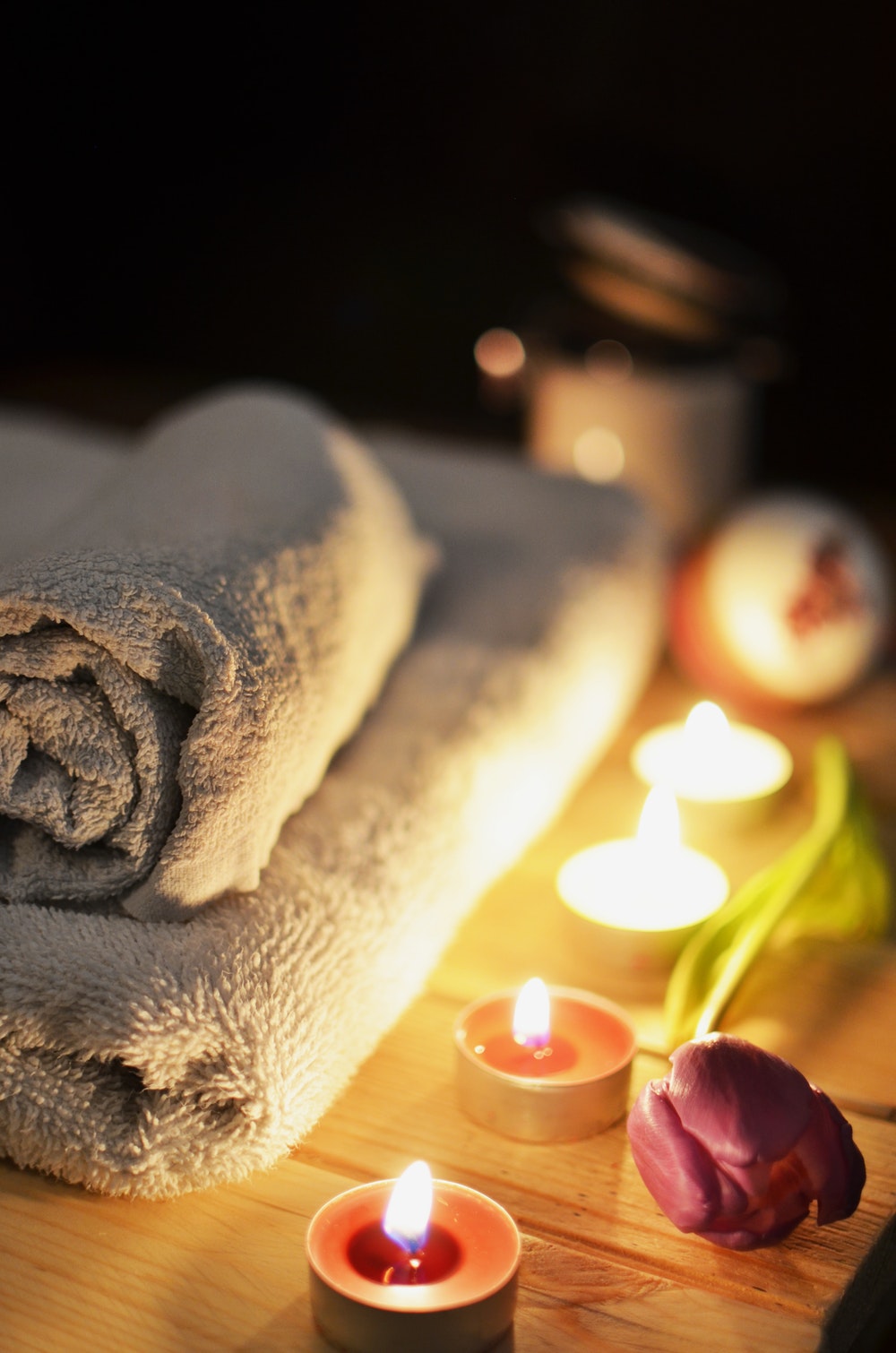
What’s up with yoni steaming?
Yoni is the Sanskrit word for “womb”, “uterus”, “vagina”, “sacred space,” etc, and is associated with the Hindu Goddess Shakti and the Divine Feminine. Yoni steaming, also known as v-steaming or vaginal steaming, is an ancient woman’s treatment which uses steam from an herbal tea blend directed onto the vaginal area. For the treatment, she can sit on a special stool designed specifically for yoni steaming, or use a chair with open slats placed over the steaming pot of herbs. Believed to cure an assortment of ailments from infertility to fibroids, yoni steaming is considered a cure-all for many in the Ayurvedic field of women’s health.
The steam used for the treatment is thought to have cleansing, stimulating, and gentle healing properties which support a healthy reproductive system and pelvic floor. By increasing heat to the yoni, clots can be dissolved and energy blocks can be discharged through the process of relaxing the deep tissue layers and muscles of the pelvis while lubricating the pelvic floor.
It’s all about balance
Also present in the yoni steaming process from the Ayurvedic perspective is the concept of balance among the Pitta, Kapha, and Vata doshas. The correct herbal blend and hot steam are believed to balance out proper circulation and blood flow by alleviating stagnation and coldness in the affected area. Steam in the Ayurvedic perspective is hot, spreading, and subtle, although certain herbs used can alter the qualities a bit as well. These properties are used normally to treat Vata or Kapha imbalances, due to the likely presence of dull, hard, slow, or cold qualities on the person.
Eastern medicine normally assumes that if pain exists in the area, there is likely stagnation which will respond to this type of warming, moving treatment. Menstrual flow problems like cramping or other pain of this nature may be eased with this type of treatment, although it should not be done during menstruation. However, an infection or any ailment where there is already too much heat and/or itching would be more of a Pitta imbalance and would probably not respond well to steaming.
Never steam if an IUD is present or if you think you might be pregnant
A yoni steaming should never be done when an IUD contraceptive device is present in the womb. Additionally, if the woman is pregnant or believes she might be, steaming should be avoided. This is because the steam is warming and softening to the area which can include the cervix, which must remain tightly closed to properly contain the IUD and fetus.
Likewise steaming should be avoided if there are infections present of the kidney, bladder, vagina, or UTI, as well as perineal stitching or tears.
Timing is everything
According to Ayurvedic practitioner Adena Rose Bright, there are some times which are optimal for a yoni steam session, while others are not so hot. For example, if you are trying to get pregnant, a yoni steam prior to ovulation or insemination is beneficial – but not if you believe you already are pregnant. If you yoni steam on the full moon or the new moon, you can bring awareness to the lunar cycles and assist in bringing a late or lost period back.
As a cleaning ritual a few cycles after a miscarriage or trauma can be helpful, as well as in an attempt to alleviate painful menstrual cramping with spotting or PMS prior to menstruation – however the steaming should not be conducted during the period, but rather the week before. It can be done up to seven times per month but only during the week prior to menstruation.
Steaming isn’t for everyone, at least not at all times
Bright explains that after menopause, women can steam “seasonally, or as needed for pain or dryness.” However, it should be noted that some women report aggravated hot flashes after steaming. You may also notice spotting or discharge following the steaming even if you are post-menopausal. It should be noted that some long-standing conditions are aggravated by steaming and should be ceased immediately upon noticing the symptoms enhanced. The best thing to do is consult a seasoned practitioner to assist you in timing and planning your steaming times.
*As with all my articles, please consult a physician prior to attempting yoni steaming or any other natural or home remedy
What are the Symptoms of a Yeast Infection, and How Can I Treat It?
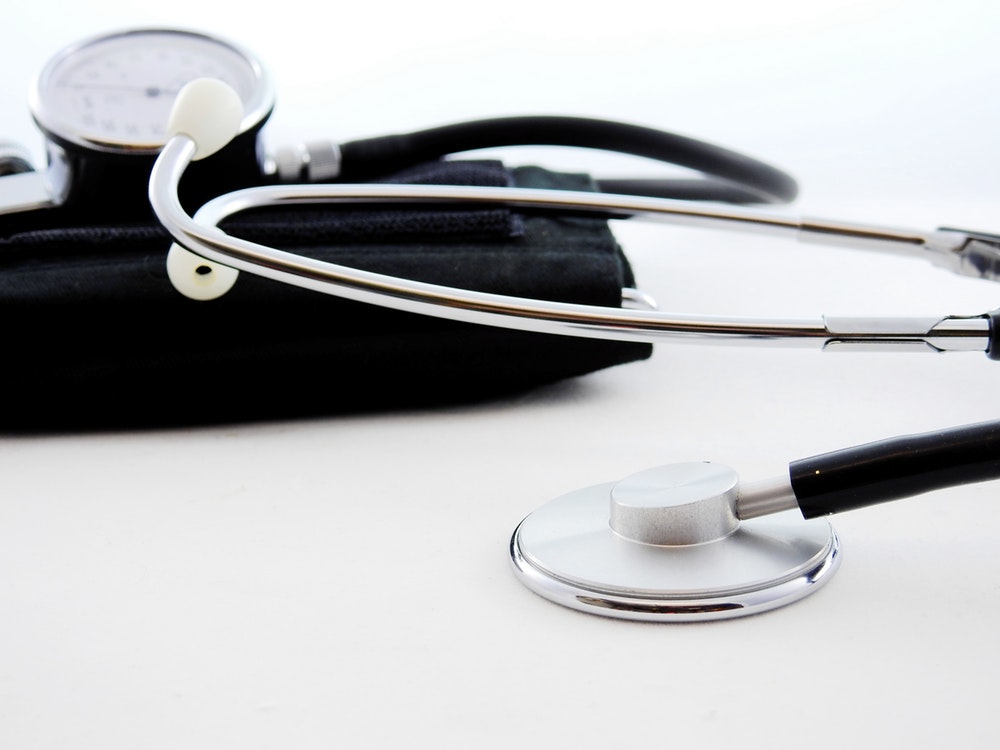
Yeast Infections – Those Unpleasant Little Secrets
A yeast infection is, quite simply, a situation where too many yeast are growing in a woman’s vagina (it may also be present as oral thrush, under the breasts, beneath skin folds, in the nail beds, and around dentures.) And although they may be extremely unpleasant, they are very common, not serious, and usually easily cured.
What causes a yeast infection in the first place?
Typically caused by a yeast named Candida albicans, the yeast cells are often kept in moderate number by the vagina’s most prevalent bacteria, Lactobacillus acidophilus. However, when something throws off the balance (sometimes pregnancy, steroids, antibiotics, birth control medications, hormone therapy, medications, diabetes, HIV, stress, chronic health conditions or other health issues), yeast can grow more than they’re supposed to which gives you the icky symptoms. In addition, some women may also get yeast infections after menopause due to the vaginal wall thinning from declining estrogen levels in the body. Both men and women can suffer from yeast infections, and it should not be considered unusual to have at least one in your lifetime.
What are the symptoms?
Well, usually the first sign is itching, possibly followed by soreness in the vagina. If you have sex, there can be burning, as well as when you urinate. A thick, white vaginal discharge comparable to the consistency of cottage cheese is often noticed as well, without an odor (other ailments, such as bacterial vaginosis or trichomoniasis may have similar symptoms to a yeast infection but they usually do have an odor. If you aren’t positive, please do check with a physician as these can get serious if not treated). Most women notice these symptoms around a week prior to their periods. (Note: if you are having these symptoms for the first time and don’t know what it is for sure, please see your doctor – especially if you are pregnant.)
Traditional treatment options
Traditional doctors normally approve of over-the-counter medications for mild yeast infections which you can use at home without needing a prescription. However, if you wish to see the doctor, you can get a prescription as well. Normally medicines come in suppository form to insert into the vagina, antifungal tablets to take orally, or antifungal creams to apply directly to the affected area. If you are pregnant, be sure to talk to your doctor before you decide on the right medication for your yeast infection.
How can I treat it at home?
If you prefer to try something a little more natural or a home remedy to start with, there are several options.
For starters, most women have good luck using plain old white yogurt – just make sure it’s plain without any added sugar or fruit. You can put some in an empty gel capsule and insert it partway into the vagina. You may also dip a clean tampon into the yogurt and insert it into the vagina up to twice daily. Externally it can be applied to the affected area but keep in mind you’ll want to stay home for an hour or two in old underwear and wear a maxipad while it’s on you. Be sure to include the plain yogurt into your diet during this time as well, being careful to keep the batches clearly marked and separated in your refrigerator to avoid cross-contamination. This has been known to work remarkably quickly for many women.
Coconut oil
You can also try coconut oil externally up to three times daily on the affected area. For oral thrush, swish the coconut oil in your mouth for between five and ten minutes daily, spitting it out into the trash can (not the sink) following each treatment. You can do this three times daily as well. Add tea tree oil or cinnamon oil to it beforehand if you like.
Apple cider vinegar
Once again, my favorite ACV saves the day! Along with white vinegar, apple cider vinegar contains elements that can rid the body of yeast infections. Mix two tablespoons of it with one cup of water and drink twice daily. You can also use some in a hot bath to reduce itching and irritation, or apply diluted with water onto the affected area. This can be left on for thirty minutes and then rinsed off with plain water.
*As with all my articles, please consult your physician before trying this at home.
